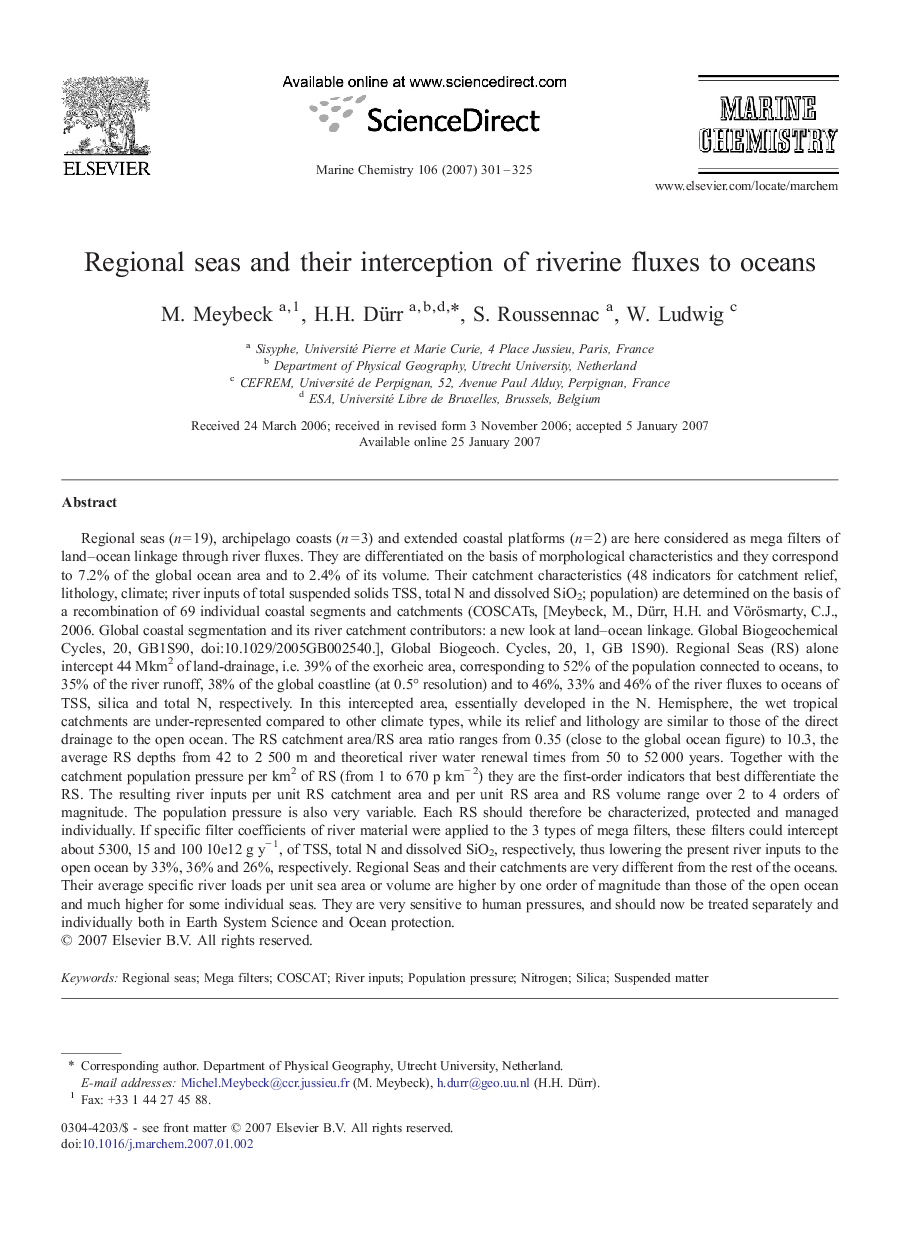| Article ID | Journal | Published Year | Pages | File Type |
|---|---|---|---|---|
| 1262597 | Marine Chemistry | 2007 | 25 Pages |
Regional seas (n = 19), archipelago coasts (n = 3) and extended coastal platforms (n = 2) are here considered as mega filters of land–ocean linkage through river fluxes. They are differentiated on the basis of morphological characteristics and they correspond to 7.2% of the global ocean area and to 2.4% of its volume. Their catchment characteristics (48 indicators for catchment relief, lithology, climate; river inputs of total suspended solids TSS, total N and dissolved SiO2; population) are determined on the basis of a recombination of 69 individual coastal segments and catchments (COSCATs, [Meybeck, M., Dürr, H.H. and Vörösmarty, C.J., 2006. Global coastal segmentation and its river catchment contributors: a new look at land–ocean linkage. Global Biogeochemical Cycles, 20, GB1S90, doi:10.1029/2005GB002540.], Global Biogeoch. Cycles, 20, 1, GB 1S90). Regional Seas (RS) alone intercept 44 Mkm2 of land-drainage, i.e. 39% of the exorheic area, corresponding to 52% of the population connected to oceans, to 35% of the river runoff, 38% of the global coastline (at 0.5° resolution) and to 46%, 33% and 46% of the river fluxes to oceans of TSS, silica and total N, respectively. In this intercepted area, essentially developed in the N. Hemisphere, the wet tropical catchments are under-represented compared to other climate types, while its relief and lithology are similar to those of the direct drainage to the open ocean. The RS catchment area/RS area ratio ranges from 0.35 (close to the global ocean figure) to 10.3, the average RS depths from 42 to 2 500 m and theoretical river water renewal times from 50 to 52 000 years. Together with the catchment population pressure per km2 of RS (from 1 to 670 p km− 2) they are the first-order indicators that best differentiate the RS. The resulting river inputs per unit RS catchment area and per unit RS area and RS volume range over 2 to 4 orders of magnitude. The population pressure is also very variable. Each RS should therefore be characterized, protected and managed individually. If specific filter coefficients of river material were applied to the 3 types of mega filters, these filters could intercept about 5300, 15 and 100 10e12 g y− 1, of TSS, total N and dissolved SiO2, respectively, thus lowering the present river inputs to the open ocean by 33%, 36% and 26%, respectively. Regional Seas and their catchments are very different from the rest of the oceans. Their average specific river loads per unit sea area or volume are higher by one order of magnitude than those of the open ocean and much higher for some individual seas. They are very sensitive to human pressures, and should now be treated separately and individually both in Earth System Science and Ocean protection.
